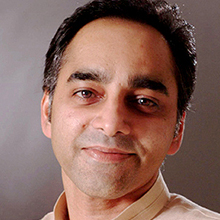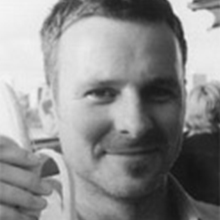Wonderland series( Wonderland, Urbania Jones, Save it for a rainy day, Spring-cleaning)
by sgnlr
This work has been commented by 5 curator(s). Read the comments
Title
Wonderland series( Wonderland, Urbania Jones, Save it for a rainy day, Spring-cleaning)
Headline
videoperformances
Concept author(s)
Vladimír Turner
Concept author year(s) of birth
1986
Concept author(s) contribution
concept, camera, action
Concept author(s) Country
Czech Republic
Other author(s)
Sergi Palau
Other author(s) year(s) of birth
1972
Other author(s) contribution
camera on Urbania Jones
Other author(s) Country
Spain
Friendly Competition
Competition category
Visual communication practice
Competition subcategory
moving
Competition field
academic
Competition subfield
student
Subfield description
AAAD Academy of arts, architecture and design in Prague
Check out the Debt. 2012 outlines of Memefest Friendly competition.
Description of idea
Describe your idea and concept of your work in relation to the festival outlines:
The WONDERLAND series is composed by four critical video-actions. Each one of them is strongly connected to the main topic of DEBT. Every video speaks about one sub-theme:
Ecology(Spring-cleaning)- masking up the problems that mankind caused is not the same as sorting them out! We should begin to act responsible and think in to the far future, which is opposite to populistic media-manipulated image that have some of the "green economy" projects
Lack of public space(Urbania Jones)- symbolic getting out from hectic and oversaturated urban landscape through the symbol of new "natural environment"- a billboard. Contrast between visual-pollution and nature.
Petrol industry(Save it for a rainy day)- we dig in to the ground to find more natural resourses. We suck up all the treassures that our planet offers. We ruin our land and we are making wars because of petrol. I burried my own personal supply of diesel next to the highway. I saved it for a rainy day(and it is comming realy fast if we don't start to act)
Social situation in contemporary city(Wonderland)- our megapolises have many faces. There are many bronwfields, abandoned houses in Valencia. There is a lack of jobs and social security. Each one of us can end up on the streets so we should think and act about this problem before it gets late
What kind of communication approach do you use?
Video-performance, public intervention, site-specific installation in urban landscape. I work with irony and metaphorical gestures, that should question our everyday acting.
What are in your opinion concrete benefits to the society because of your communication?
Each of my work is an act of free-minded creativity. I don't care if we call it art, activism, or destruction. The importatnt thing is its objective. Trying to think in wider context and living life according to the awareness that each act we do affects the whole society should be obligation of all of us. Doesn't matter in which scale. Even small actions can change things. Critical thinking and its result- open society is exactly, what contemporary politics DON'T want.
I raise questions, I speak with people on the streets and discuss topics related to the artwork so I can affect the action immediately thanks to direct feedback. That means that the public is creating the piece with me and affecting its surroundings.
There are people contacting (critical feedback welcome) and i see I can be and inspiration to others, which is great satisfaction!
What did you personally learn from creating your submitted work?
We are opressed and restricted to act in exact rules, that are set by our politicians and guarded by police. The fear of acting "different" makes the wolf look bigger. But the problem about not-acting free is not rooted in the real consequences that could potentially happen after our disobedience. It is mostly problem of our closed-mind and fear of stepping out of the line. I am trying to step out of this line doing the thing I love which could change something and I am happy and free with it- that's my goal and satisfaction.
Why is your work, GOOD communication WORK?
It speaks international language-there is no need to translate it, asi it is pure video-language with no spoken word. It works with simple metaphore, remixes pop-culture symbols but doesn't loose poetics and esthetics. It didn't hurt anyone, it is NON-PROFIT, DIY. It was made with intention to discuss real problems, not to command people to BUY ART.
Where and how do you intent do implement your work?
In brownfileds of Valencia. The place is next to Barcelona-Valencia Highway. You can't miss this place if you enter Valencia from this direction. It is also on the opposite side of the art university, where I was for my student exchange. The university campus is full of sculptures, instalations and "graffitti". The problem is that the majority of art students obey the school rules-they think they do art in public space if making an art object within the student campus. But this is not public space. It is closed area, for students. There isn't much public entering the area so their artwork can be seen mostly by themselves and their colleagues or profesors-thus not speaking to the public. They usually create if there is some open-call for artwork within the school campus so their work is actualy a commission tied up by the rules of the contest. Good example are the "graffitti" artist who paint the school walls with nice colourful characters- they sold their freedom and they are deniing the potential of radical art in the streets! There is a big problem with cuts in education system in Spain. Insufficient support for schools is a topic why the students go to protest in the streets. On other hand they get money to do their legal graffitti on university walls and I don't find that logical.
Place of my action is next to the highway, so thousand of people driving by everyday can see it. I use the power of violent advertising(billboards ruing or landscapes) in opposite way that advertising companies. There is an abandoned factory behind this place and small home-less colonies arround. These are the places that show us the real face of the city.
Did your intervention had an effect on other Media. If yes, describe the effect? (Has other media reported on it- how? Were you able to change other media with your work- how?)
All of the works are brand new so there wasn't enough time for wider distribution.
I have been contacted by several festivals, websites and curators, to show my work on their platforms. Thus the work can be seen by wider audience and spread my point of view
Curators Comments

Scott Townsend
The actions in the videos are highly effective at demonstrating particular ideas- they combine a site specific intervention with a clear message that is easily grasped by an audience. They also strike an interesting balance-
they appear not to let the author nor the audience "off the hook" with making a parody of the subject matter: the author does not make "fun of something" creating a joke out of the situations he presents us with. He uses irony in a way that is highly effective that provokes us to think further about the implications that his interventions create.
This work is highly consistent- in a positive manner: each video builds on the previous one. The videos tend to be short actions- I would be curious about whether they could be made into a kind of larger video with more of a storyline as one possible way to explore and sustain some of the ideas.

Shoaib Nabi
"The WONDERLAND series " an appropriate title that had me anticipating what to expect from each short video. Debt is not exclusively financial and you seem to have captured the negativity associated with the word as a tribute through whimsical titles, cynically portraying the actions. However, I would like to encourage you to perhaps on a formal level edit certain aspects of the audio track an"The WONDERLAND series " an appropriate title that had me anticipating what to expect from each short video. Debt is not exclusively financial and you seem to have captured the negativity associated with the word as a tribute through whimsical titles, cynically portraying the actions. However, I would like to encourage you to perhaps on a formal level edit certain aspects of the audio track and the video so their relationship as a series is stronger. In your video "Save it for a rainy day" your actions and justification is understood — but why stop there? What about a site mark? How do you mark this territory where you may return to? It may give an opportunity for visual dialog that could ideally challenge your viewer or provoke them. "Urbania Jones" has this essence but you may want to revisit the editing. "Wonderland" kept me intrigued, first with the background audio giving clues to the narrative and then the figure seamlessly blending with its landscape similar to "Spring Cleaning" which is an intervention that just masks the issues you so eloquently state in your written statement and through your video.
I would imagine you may have already thought about how your work is presented in Valencia — I would be eager to see the response you get, specially from within the communities. I believe it is vital that you provoke and leave all your videos open to discourse and not a social commentary on the subject. Your intentions from what I see and read is moving in the same direction. Well done Vladimír.d the video so their relationship as a series is stronger. In your video "Save it for a rainy day" your actions and justification is understood — but why stop there? What about a site mark? How do you mark this terittory where you may return to? It may give an opportunity for visual dialog that could ideally challenge your viewer or provoke them. "Urbania Jones" has this essence but you may want to revisit the editing. "Wonderland" kept me intrigued, first with the background audio giving clues to the narrative and then the figure seemlessly blending with its landscape similar to "Spring Cleaning" which is an intervention that just masks the issues you so eloquently state in your written statement and through your video.
I would imagine you may have already thought about how your work is presented in Valencia — I would be eager to see the response you get, specially from within the communities. I believe it is vital that you provoke and leave all your videos open to discourse and not a social commentary on the subject. Your intentions from what I see and read is moving in the same direction. Well done Vladimír.

Kevin Yuen Kit Lo
Each discrete video piece works as a poignant metaphor and criticism of key aspects of capitalist society. The visual staging and photography work very well in each individual piece, and complemented by the physical, embodied, intervention, the videos becomes viscerally poetic, in spite of (or perhaps because) the almost banal context.
The complementary text you have provided alongside your videos contextualises them very well, and provides strong argumentation for your performances and approach. I really appreciate the radical subversion of norms of public space, and the norms of how we are supposed to act within them. And the critique of the "public art" of the schools is also very important.
But I do wonder how effective the works were as public interventions? For example, would the drivers of the cars really have the opportunity to be affected by the actions? Was there a public on hand during the interventions? You mention you spoke to people on the street, what was the feedback you received?
Seen as a series, the project as a whole becomes even more poignant. The characterisation of the figure starts to come into play and a more complex reflection is engendered. The overall feeling is consistent, and the critique is quite powerful. I am curious to see the work in an exhibition context, and wonder how that might play out.
Roderick Grant
As a triptych, and in isolation, the work begins to evoke more questions than it offers answers or solutions, and in this quality it succeeds par excellence. The activities, or lack there of, ask us questions of useful work vs. useless toil; remediating vs. camouflaging debt/damage; comfort vs. unease - all while in urban spatial realities we are both familiar with, yet have not experience as they presented to us through these shorts.
As the succinctness of each short commands an intense but brief engagement, I'm immediately left wondering about the intervention of the footage itself into another environment - not a festival or gallery, but as a live event written over top of another context to gain critical traction from the friction of radically different spatial qualities against one another.
Spring Cleaning screened above a row of garbage bins.
While this opposition may lack the sophistication of the initial thought, the abrupt nature of the communication takes the communication out of the realm of constructed event into the public realm of (re)action.
The simplicity of the footage, and the manner in which they reveal themselves is consistent and direct - crossing the threshold between commentary and intervention might just extend the value of these shorts from filmic moments to more engaged interactions with the viewer.
Lastly, there is a sense of dedication to the serial nature of these situations and the human actors/actions that mark their narrative progression. Would a simultaneous screening be of benefit? Doug Aitken applied this strategy to great effect in his work 'Interiors' which was both serial and simultaneous, allowing the experience of multiple points of view at once depending on the viewer's orientation to the projecting surface.

Jason Grant
A pleasure to watch. This is very simple, highly intelligent work. For me the intelligence and effectiveness is not in any kind of conceptual sophistication, rather the gentle paradox of negating futility with deliberately futile gestures. The comedic outcome is an antidote and critique of the bluster and cynicism of commercial mass media and the art market.
To do this convincingly is actually very, very difficult. So many subtle decisions result in a genuine charm. The spirit of these actions then is just as meaningful as the rhetorical content.
The relationship to the Festival's theme of Debt is indirect but present. Critical creative expression here is ingenious public protest.
